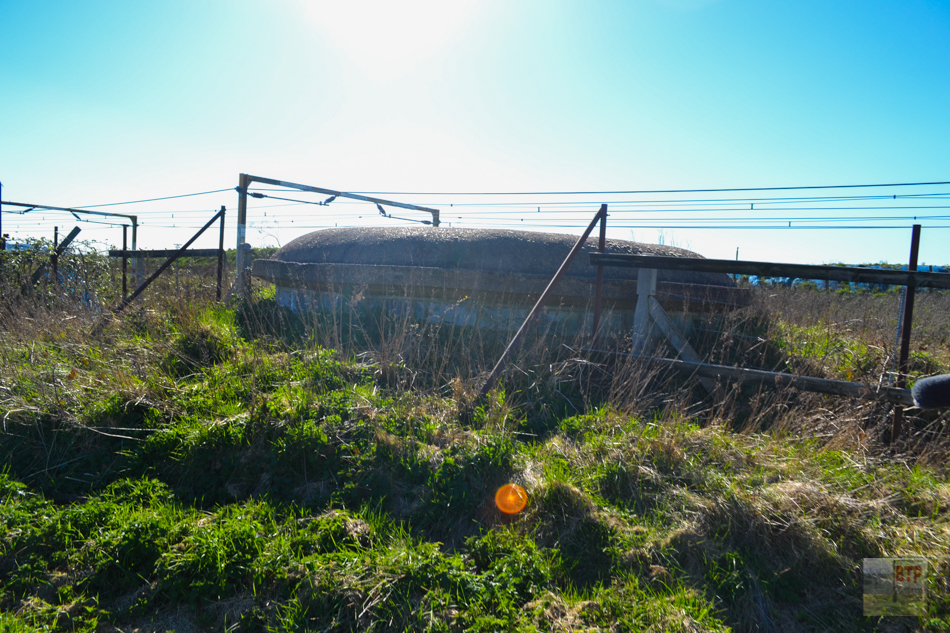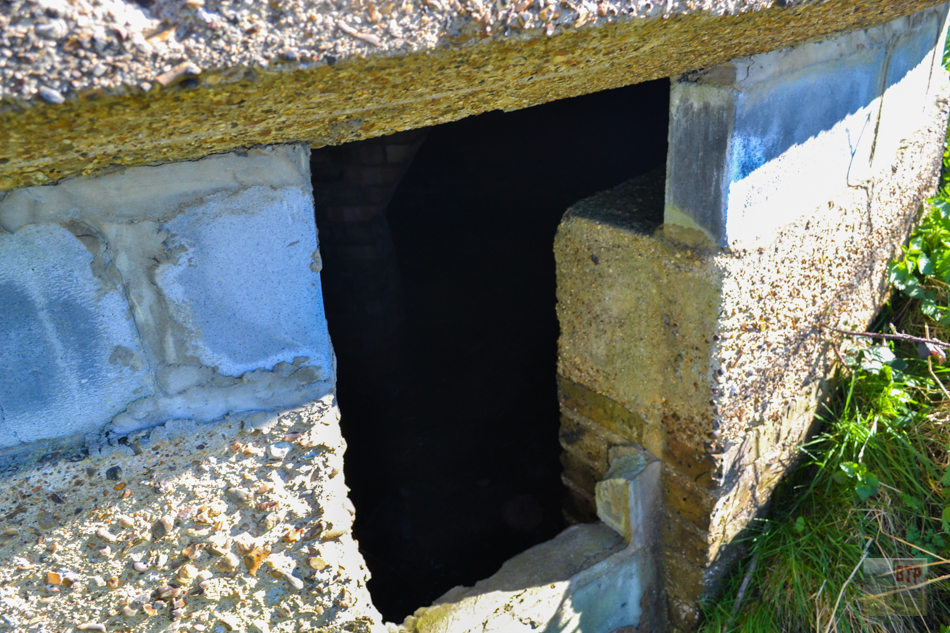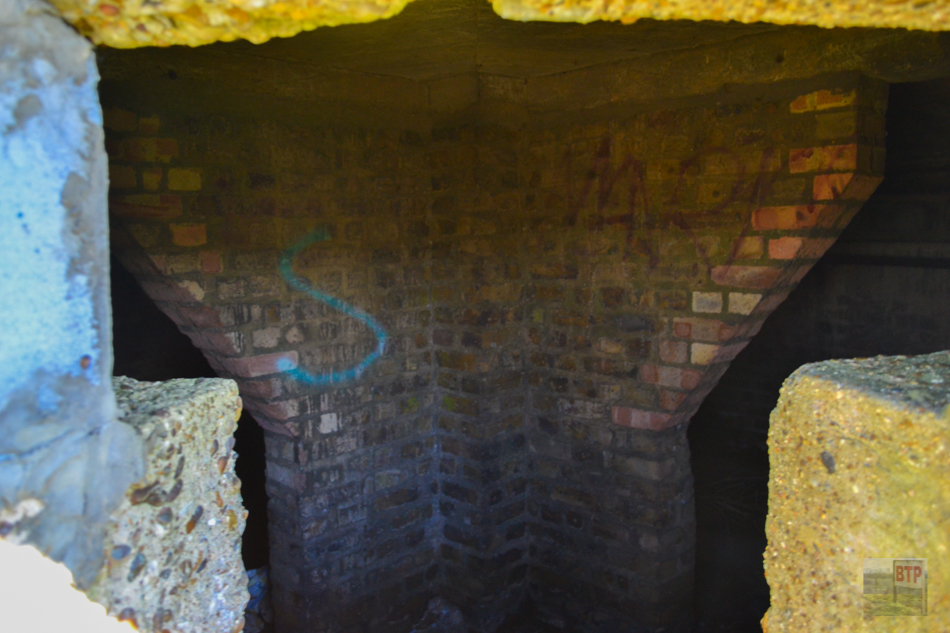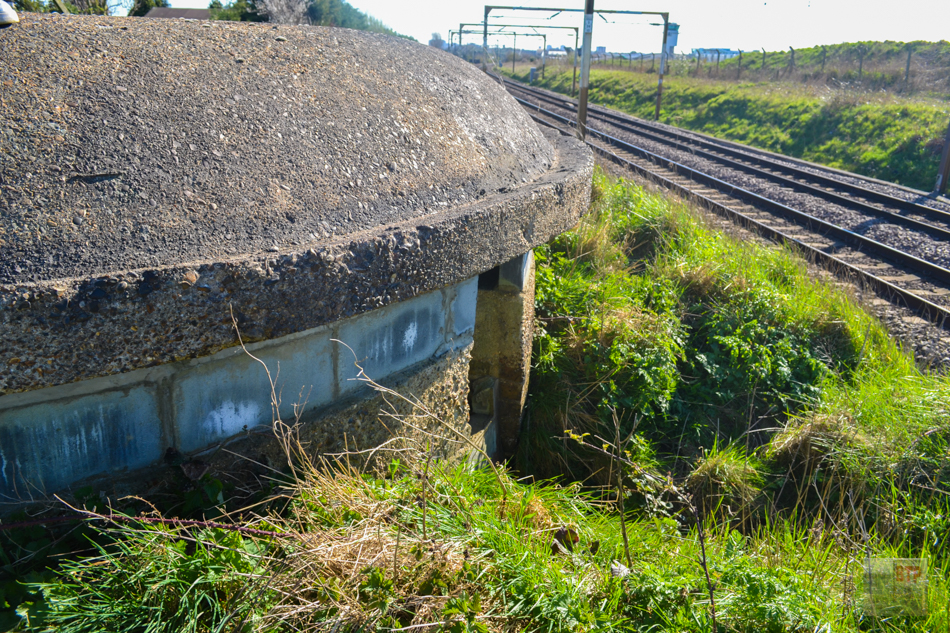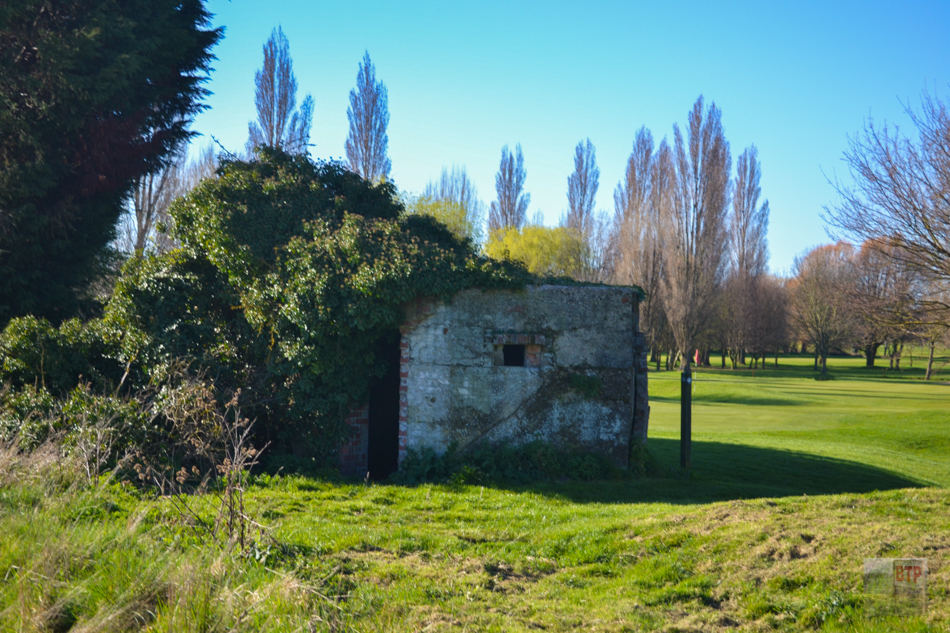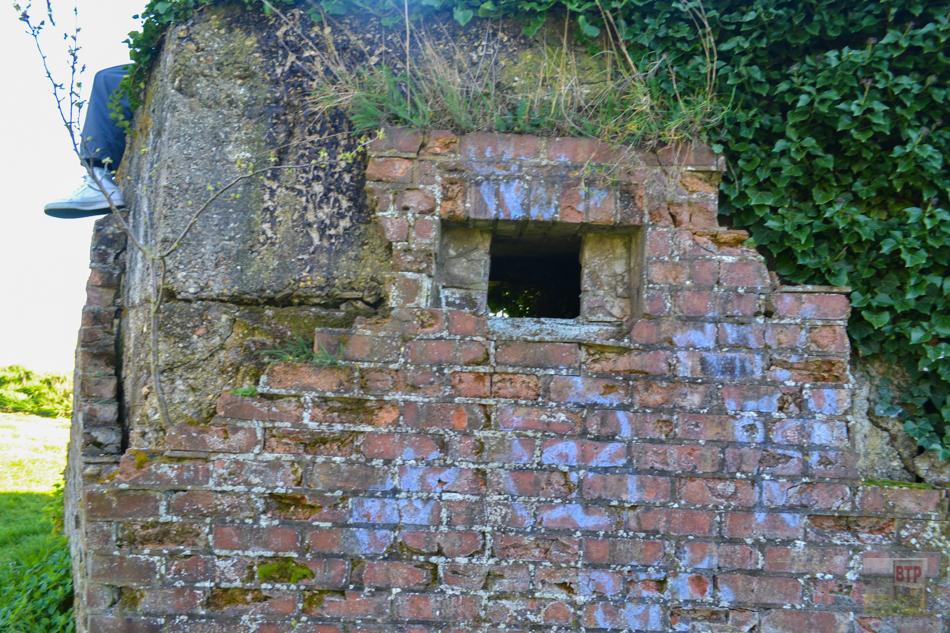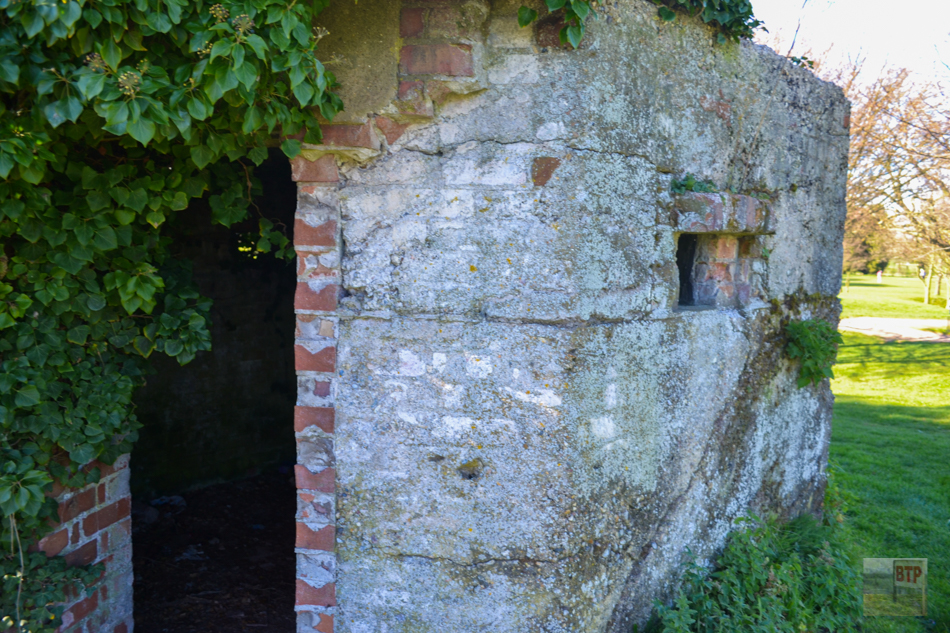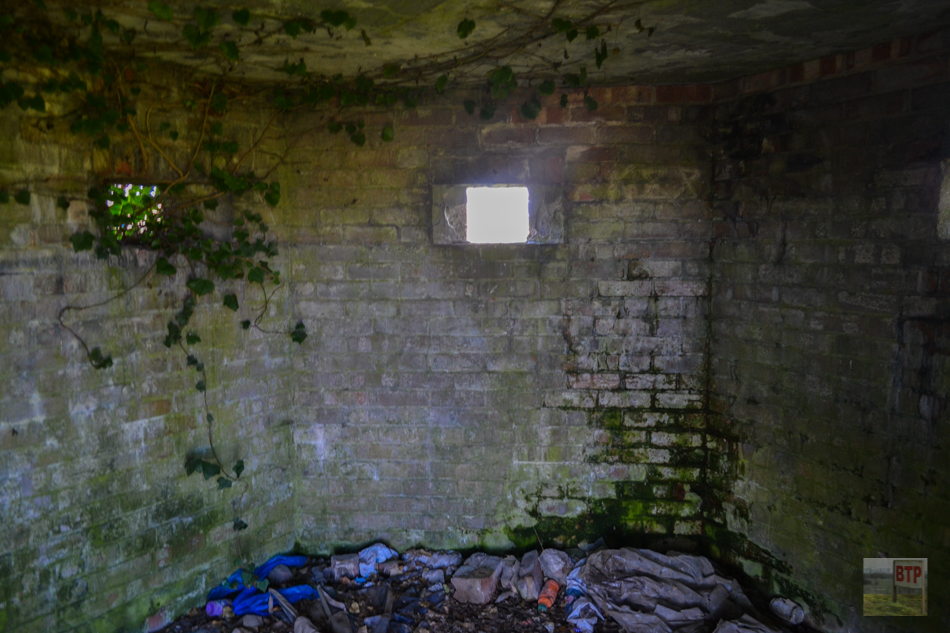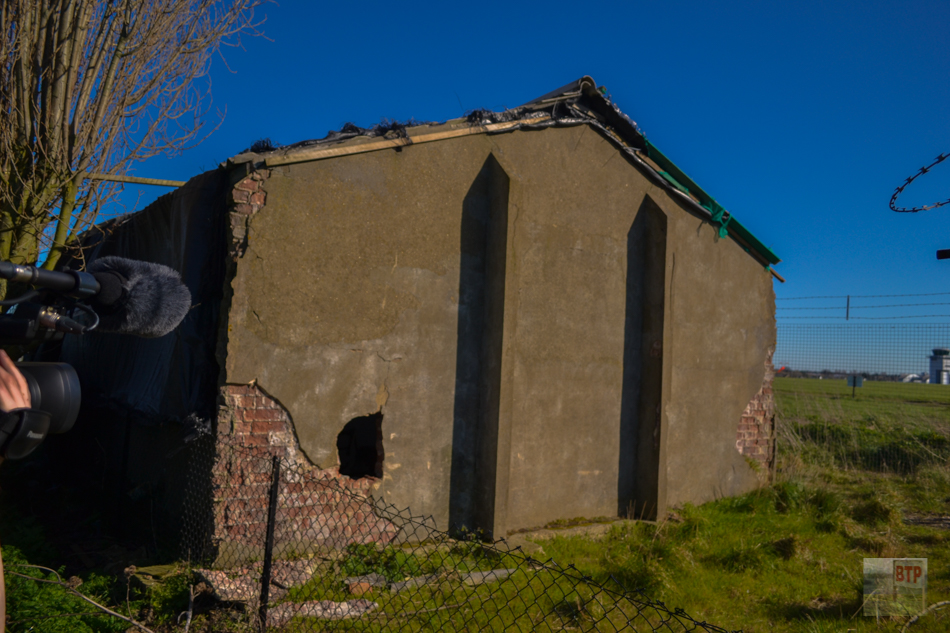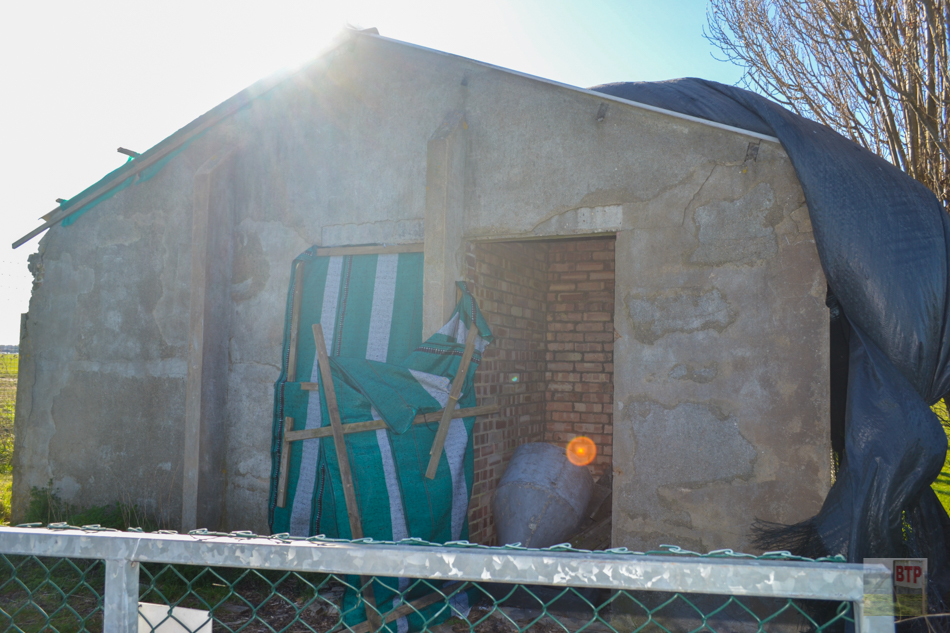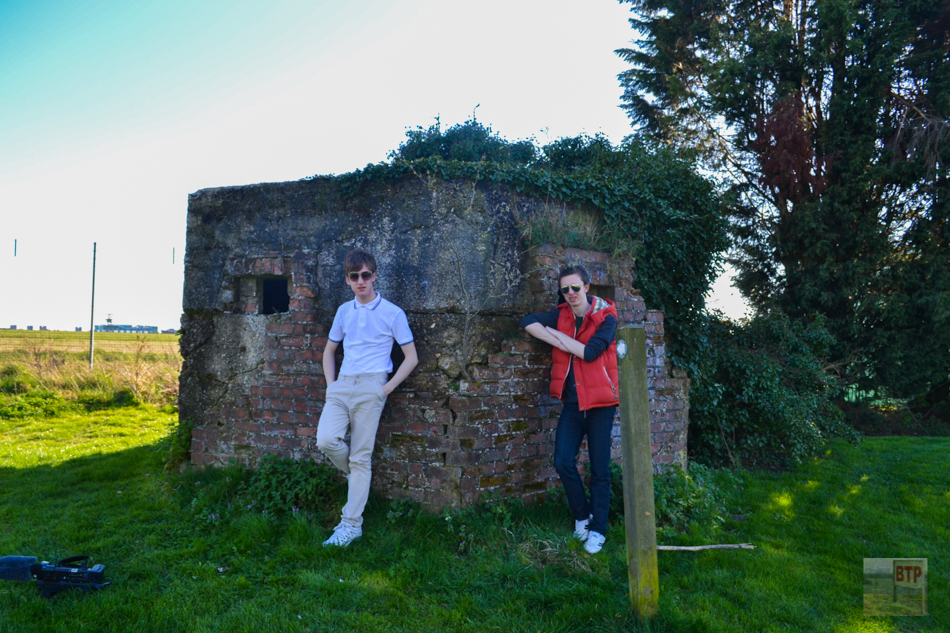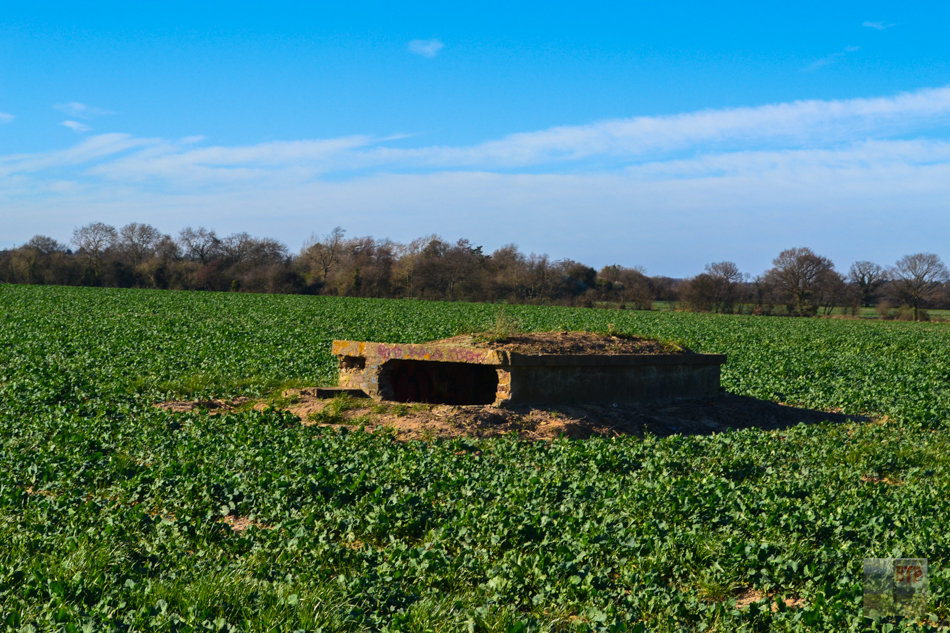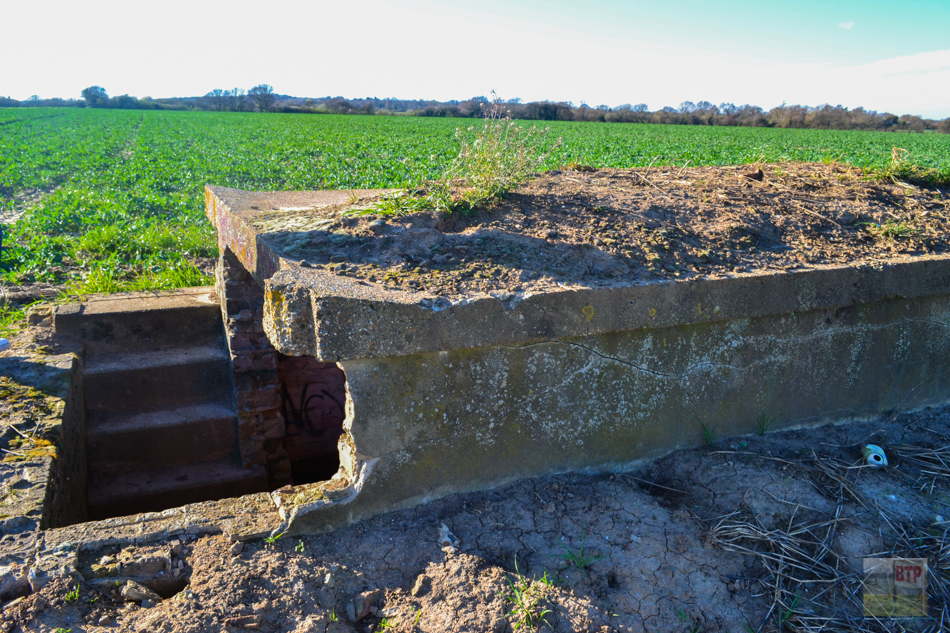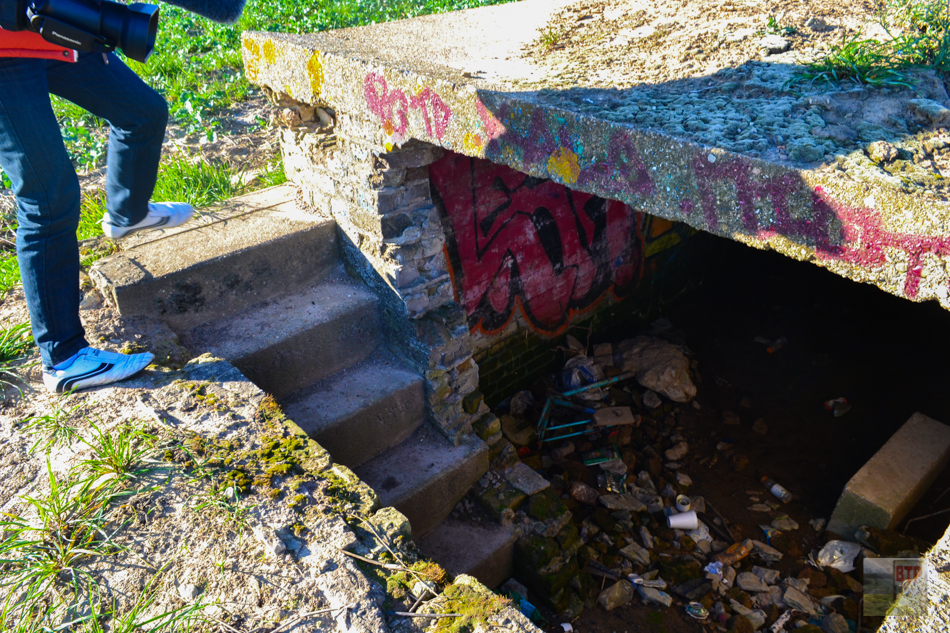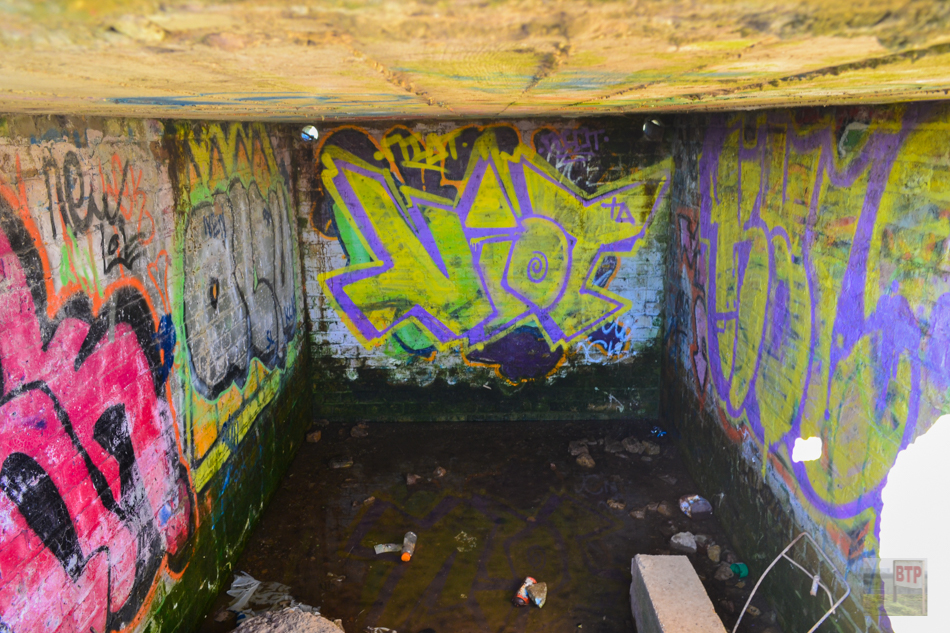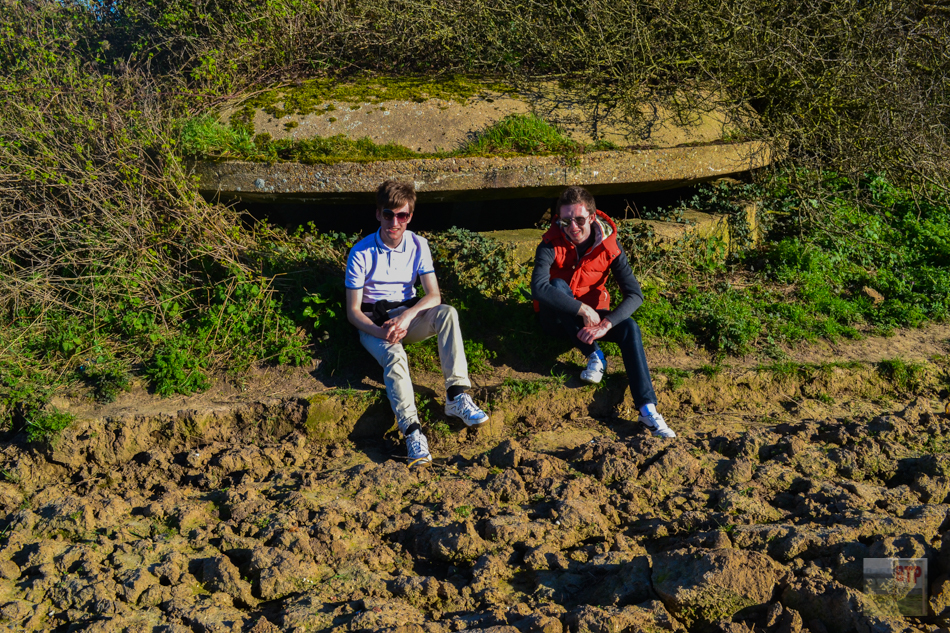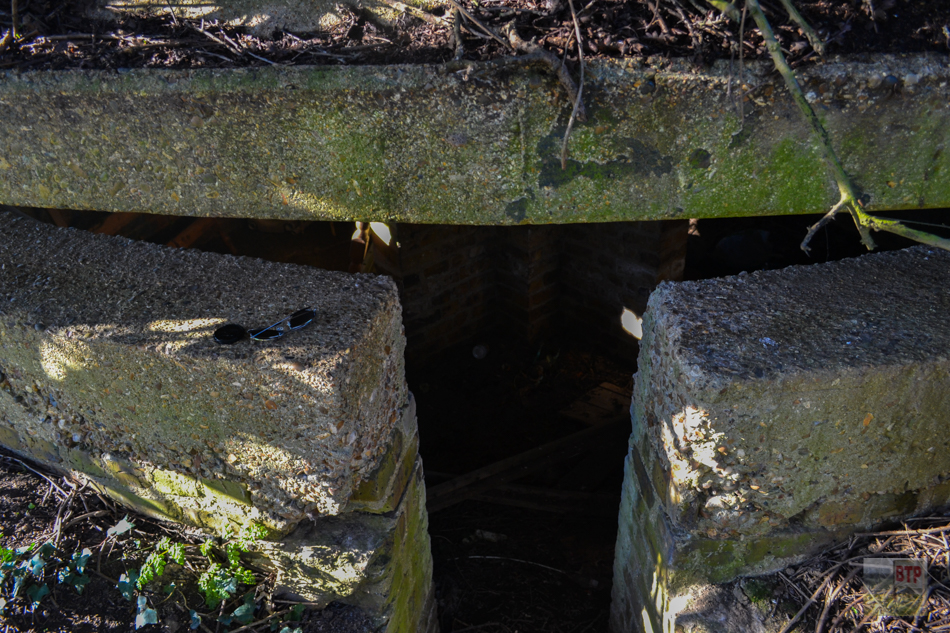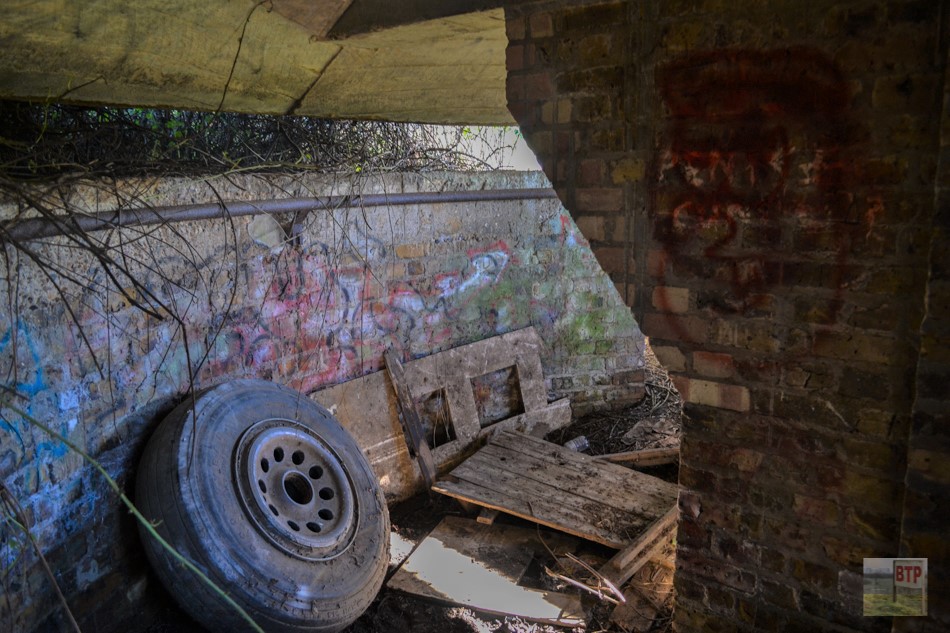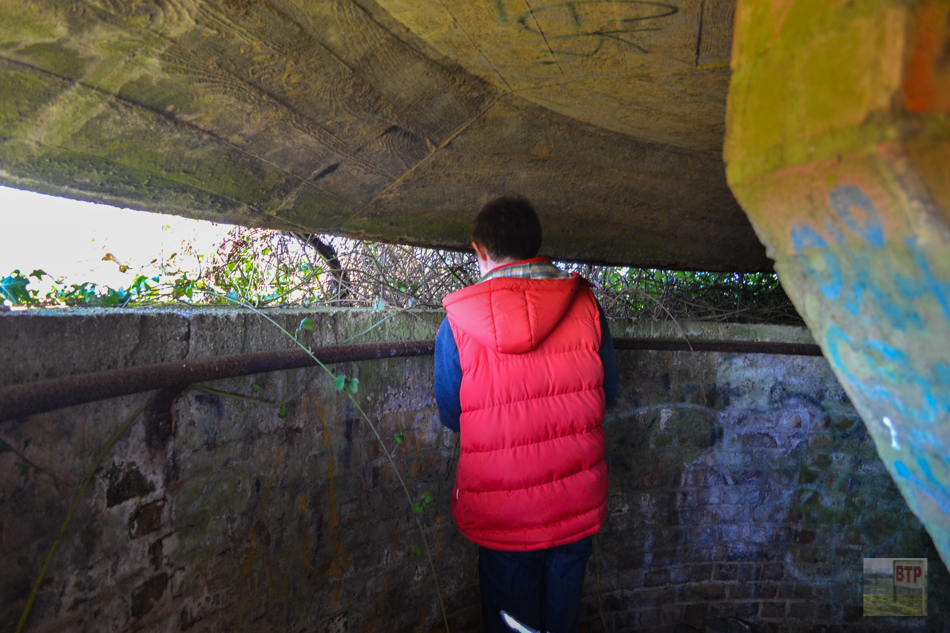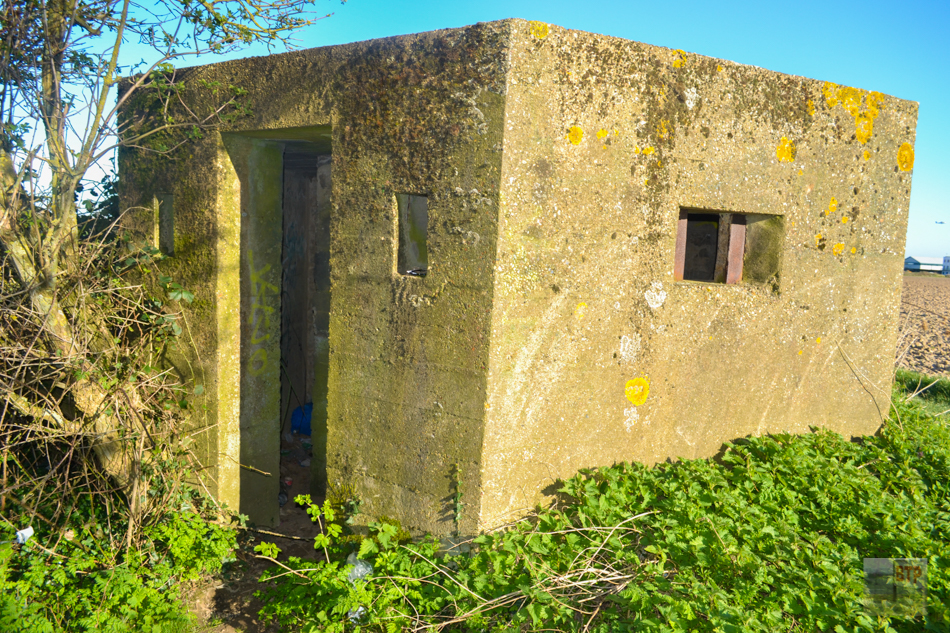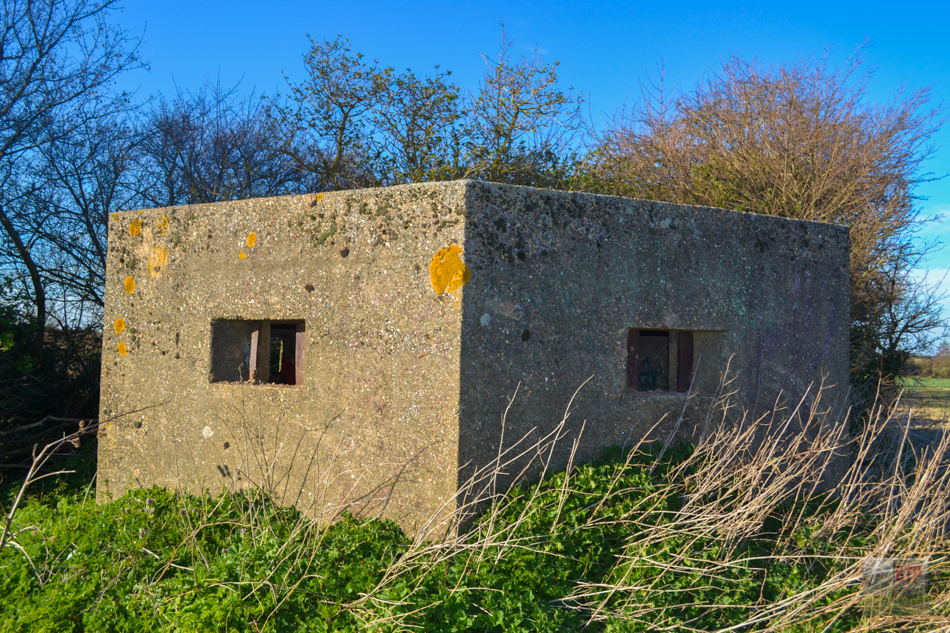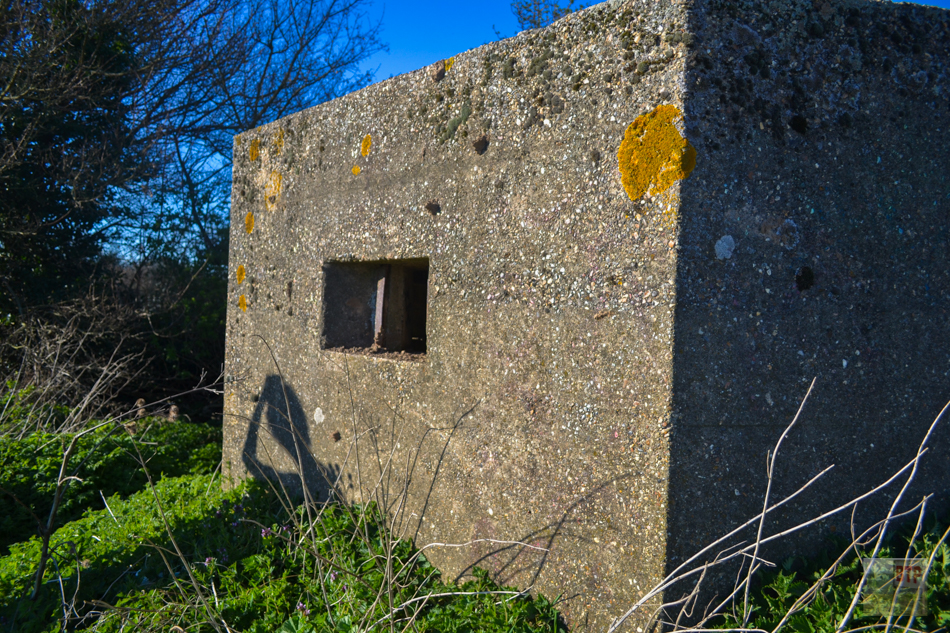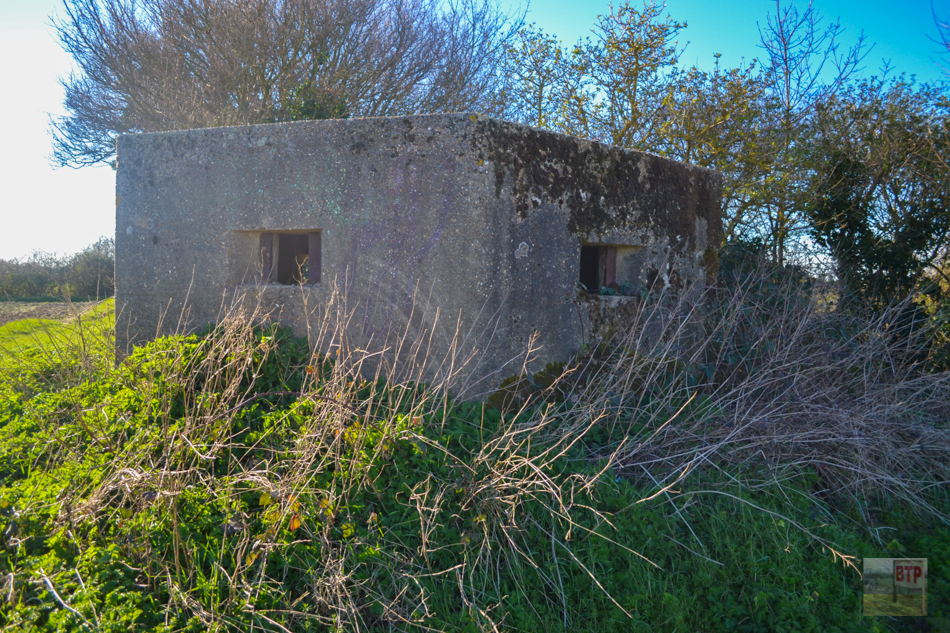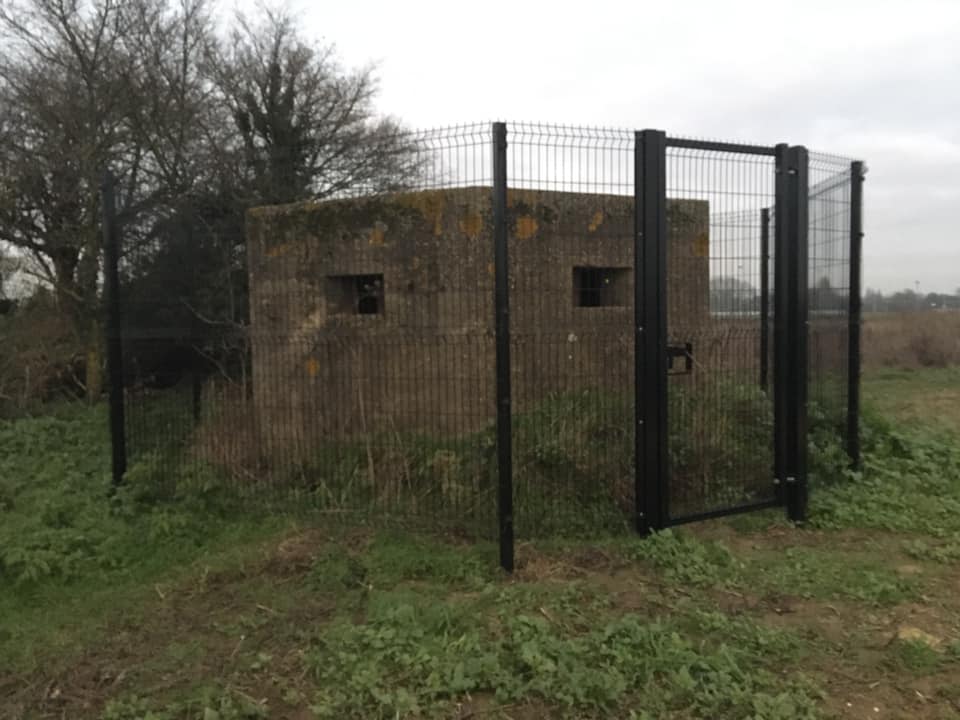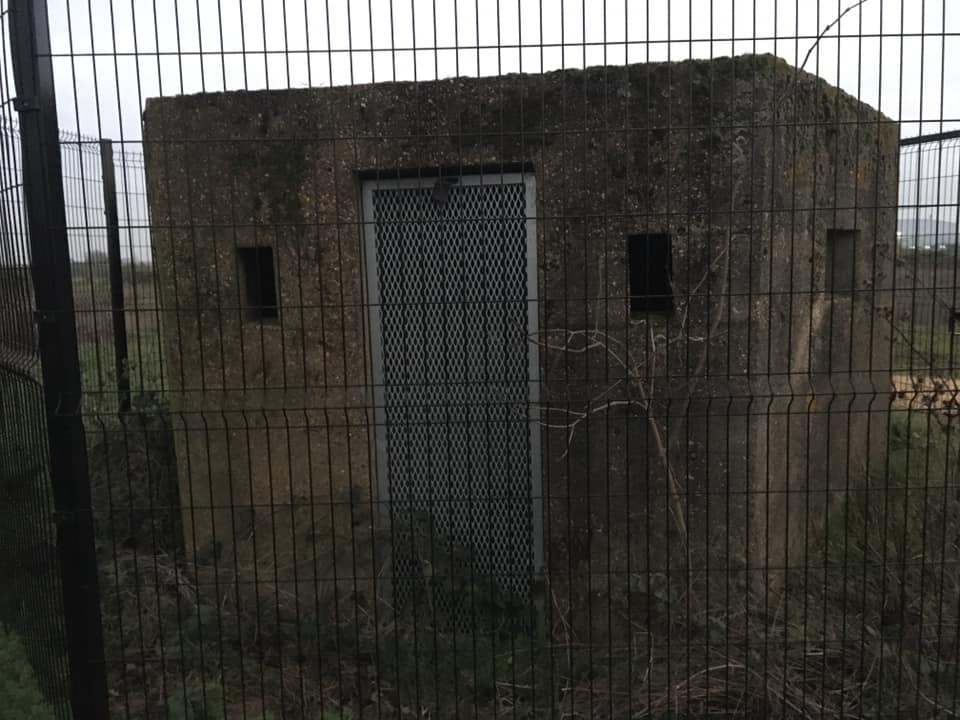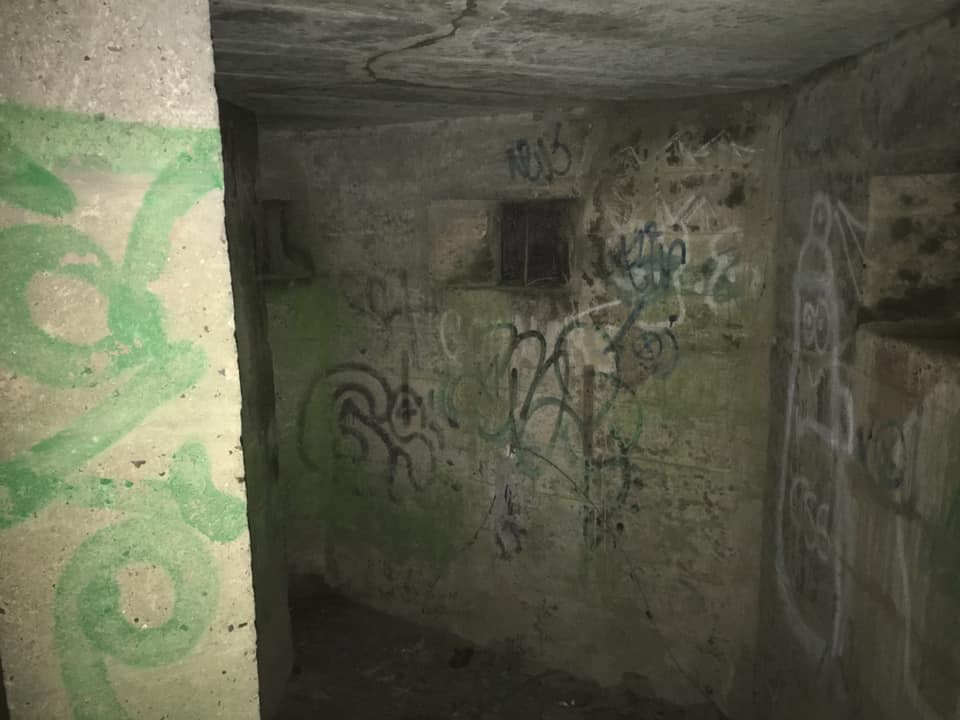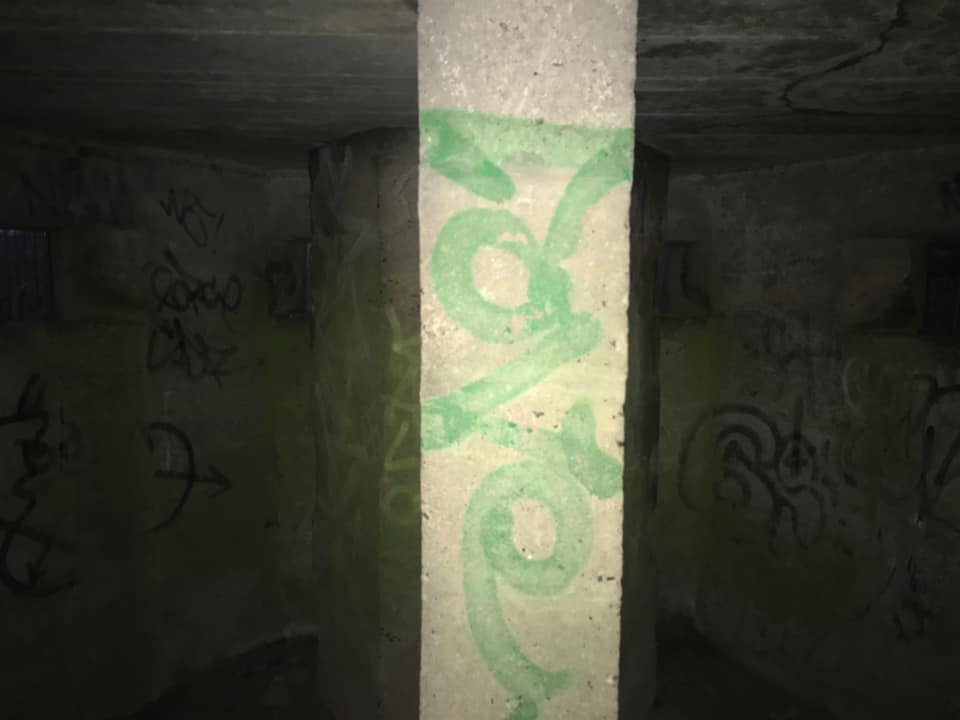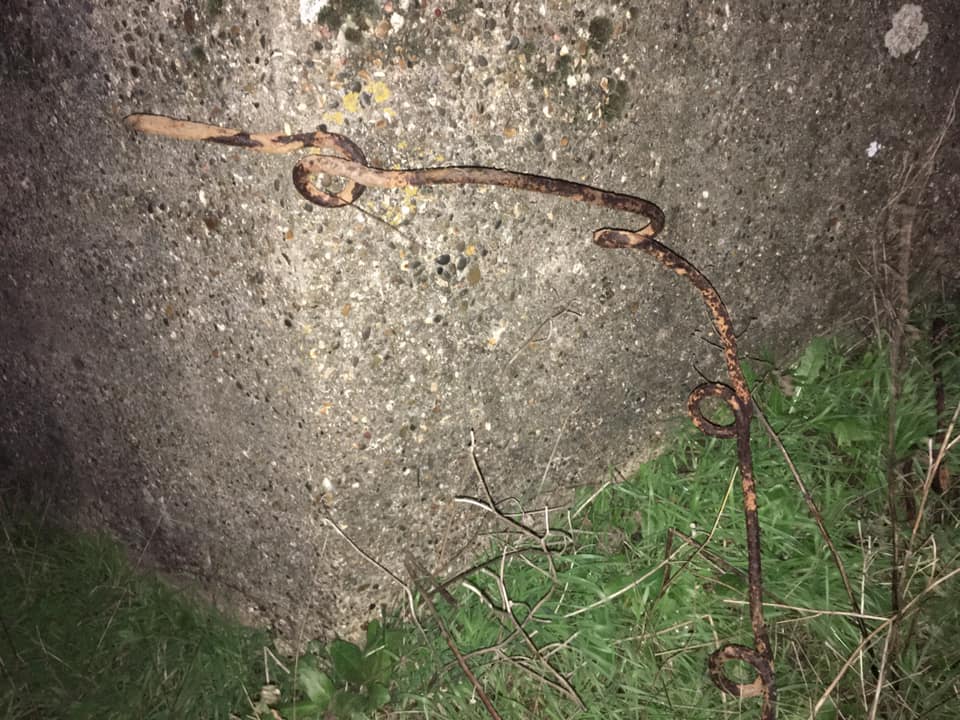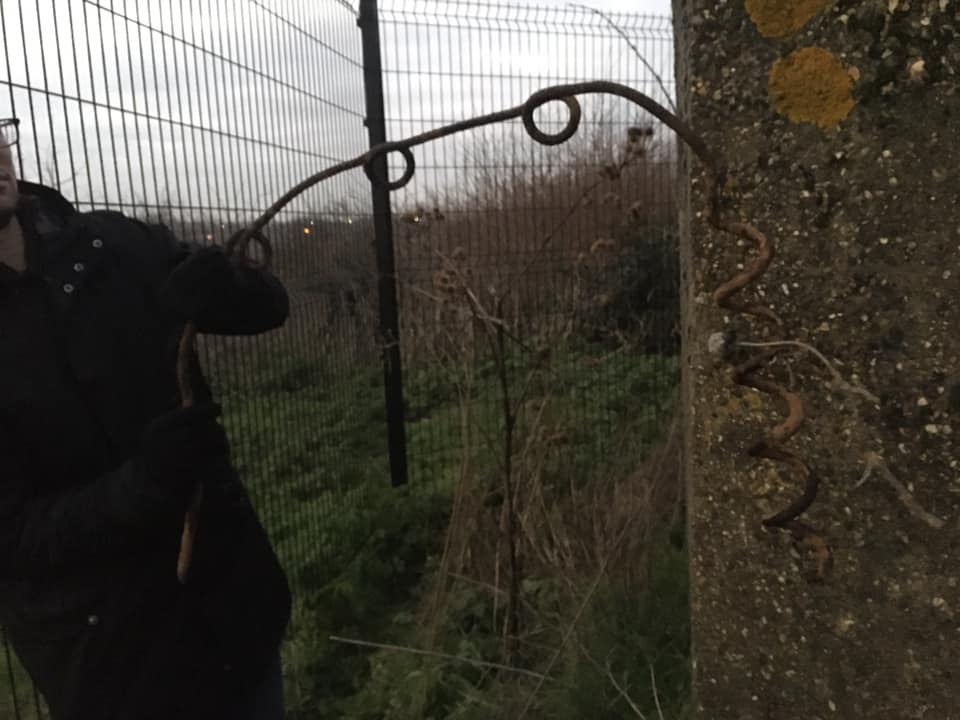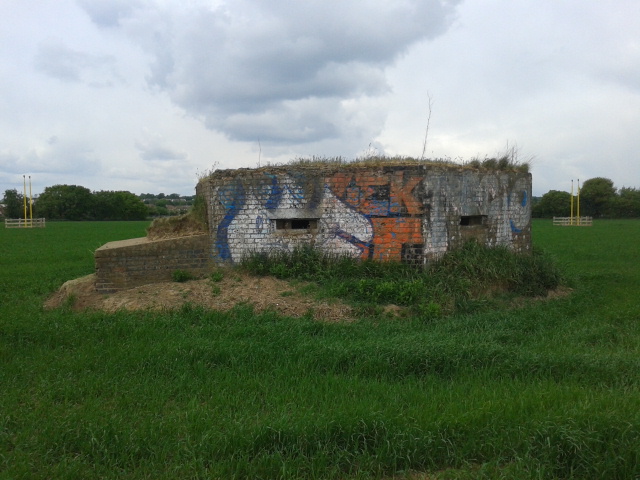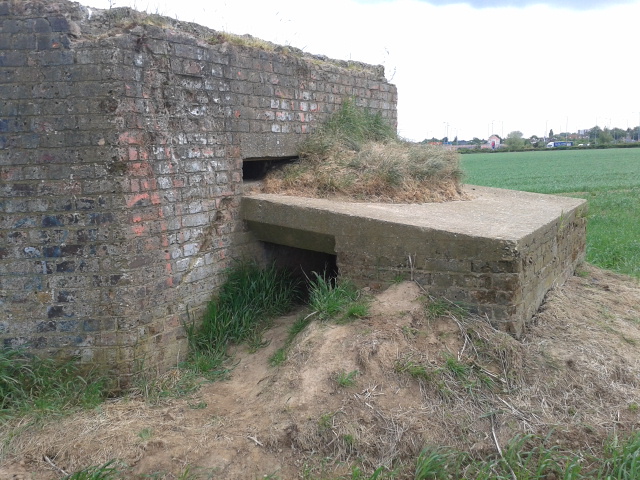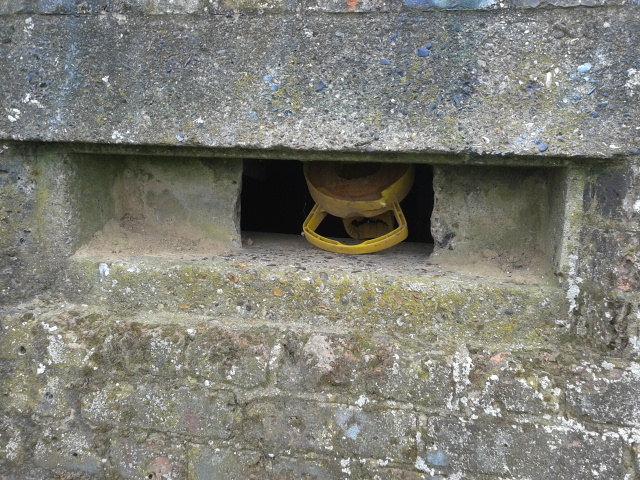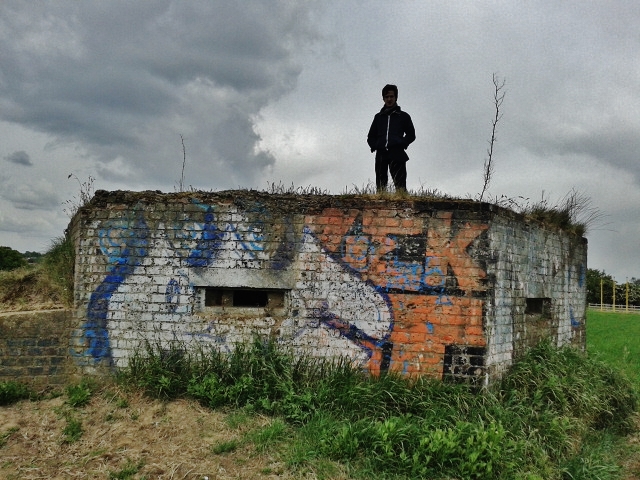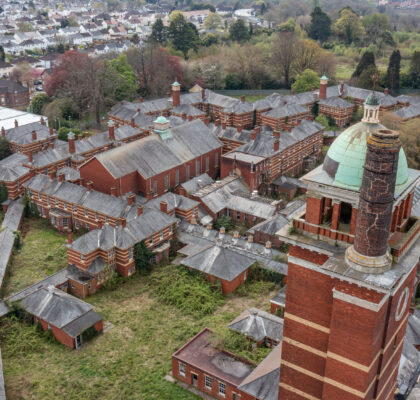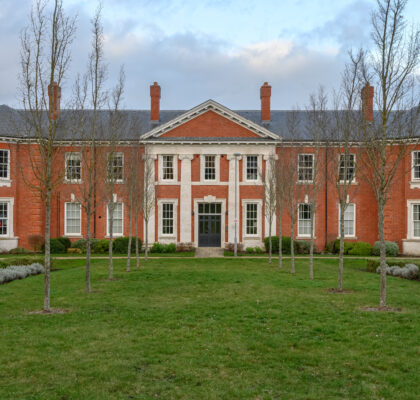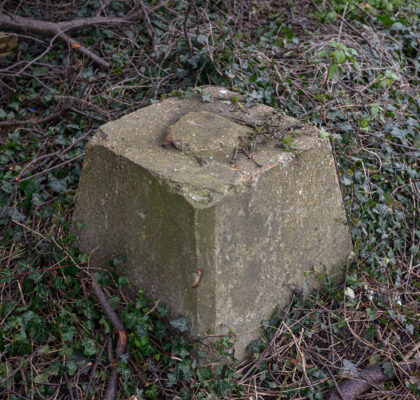Back in Easter 2014, the two BTP boys, and occasional accomplice Jack, set off to investigate pillboxes once defending Rochford airfield – now Southend airport. This is when the article was written and most of the photographs taken at this time – since then, ongoing development has changed much of the farmland but the pillboxes mostly survive as of 2021. The airfield began life as a significant Royal Flying Corps aerodrome in 1916 during the First World War. Although it became an airport in 1935, it wasn’t designated for civilian use until late 1946, after the war. Using sources such as the Defence of Britain Project, coupled with Google Earth, we were able to mark out the locations of several pillboxes and defensive structures on a map we printed out of the area. Within the airport grounds, a battle headquarters bunker and several Pickett-Hamilton forts also survive, but as of yet we are yet to investigate these.
South-East Pillbox – Type 22
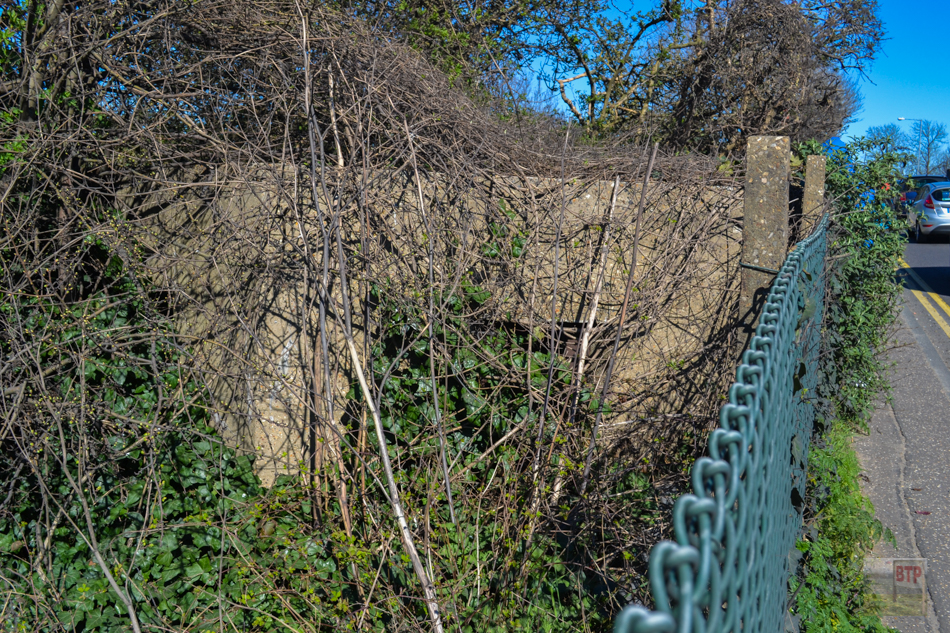
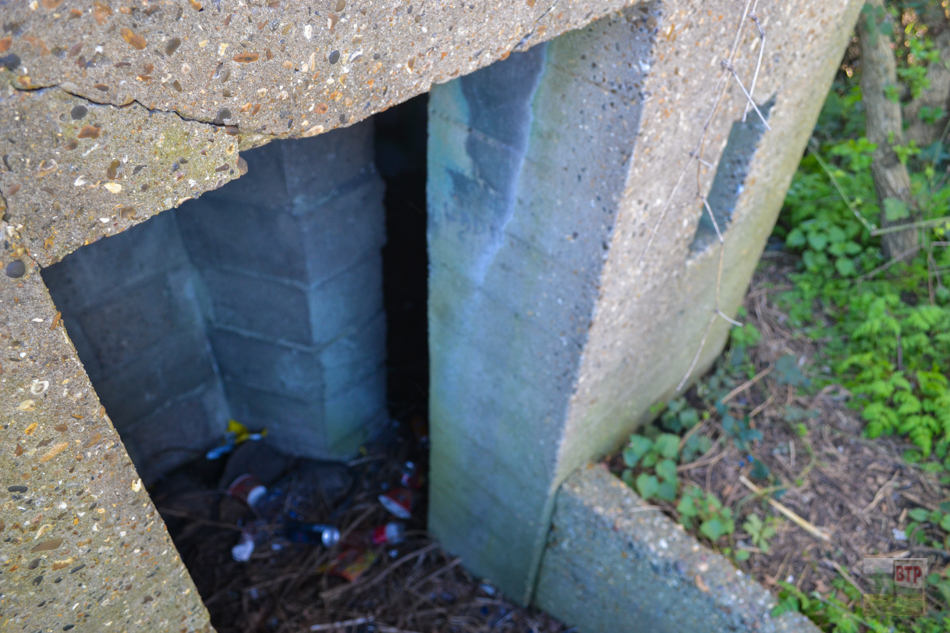
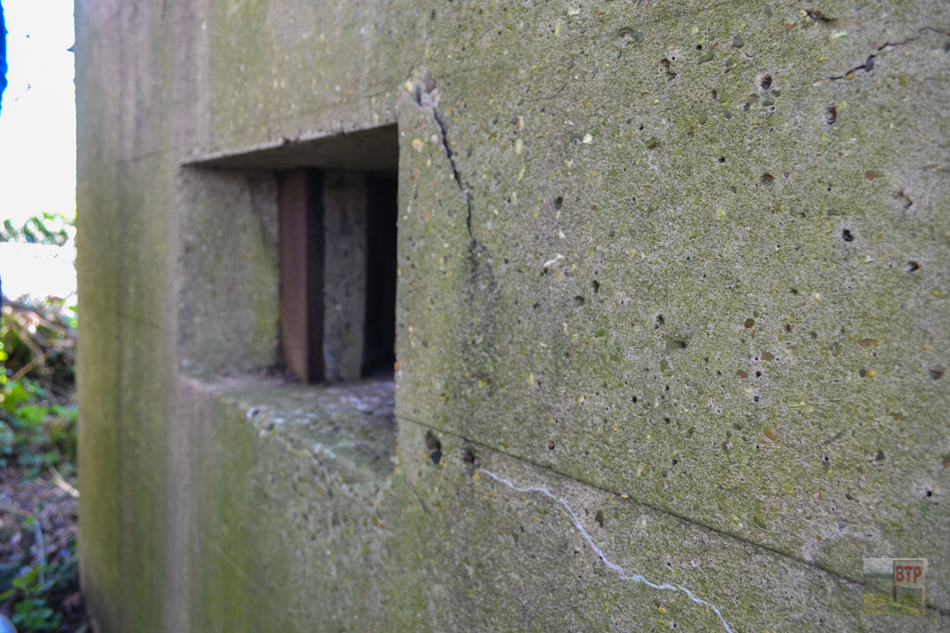
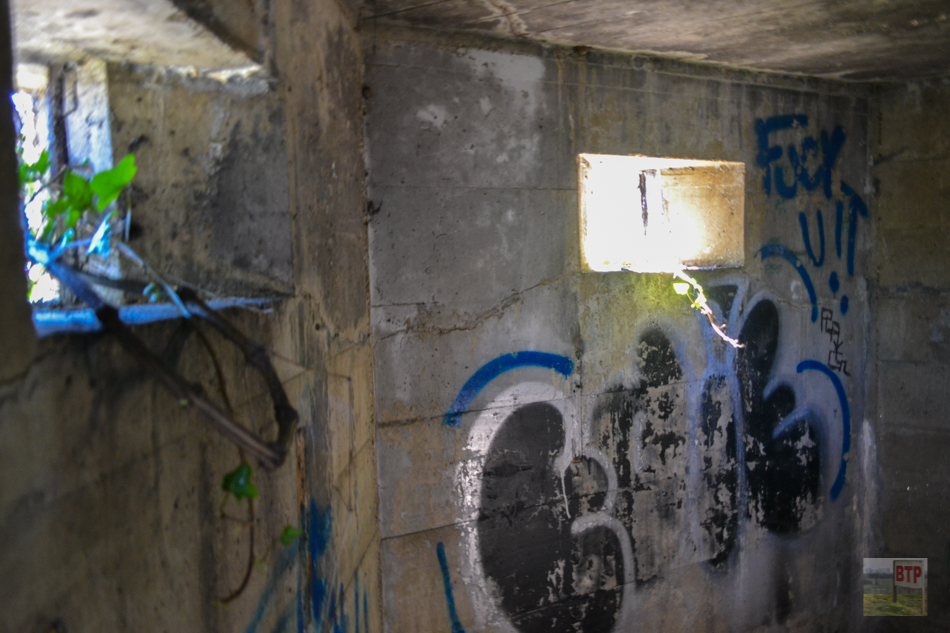
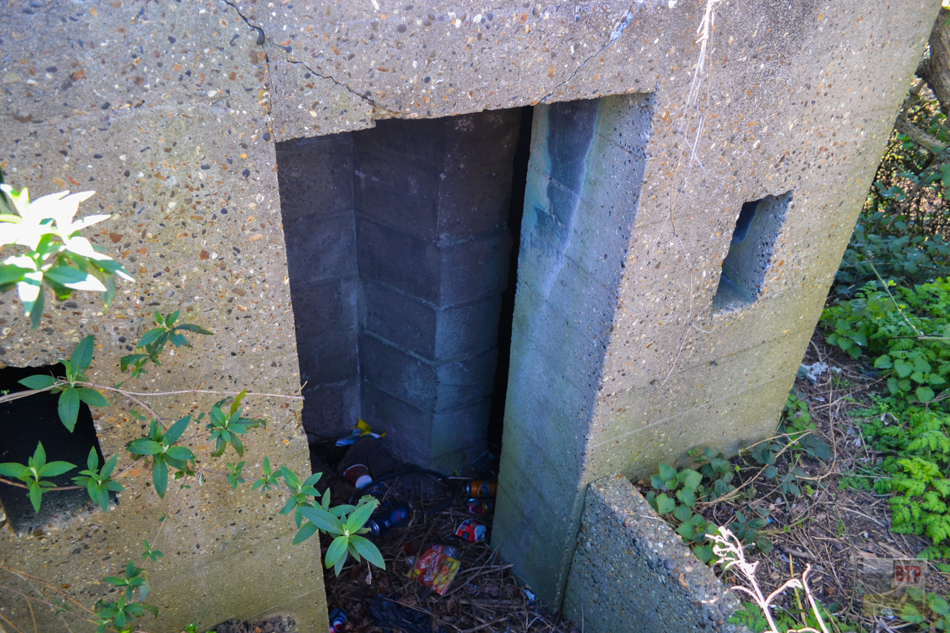
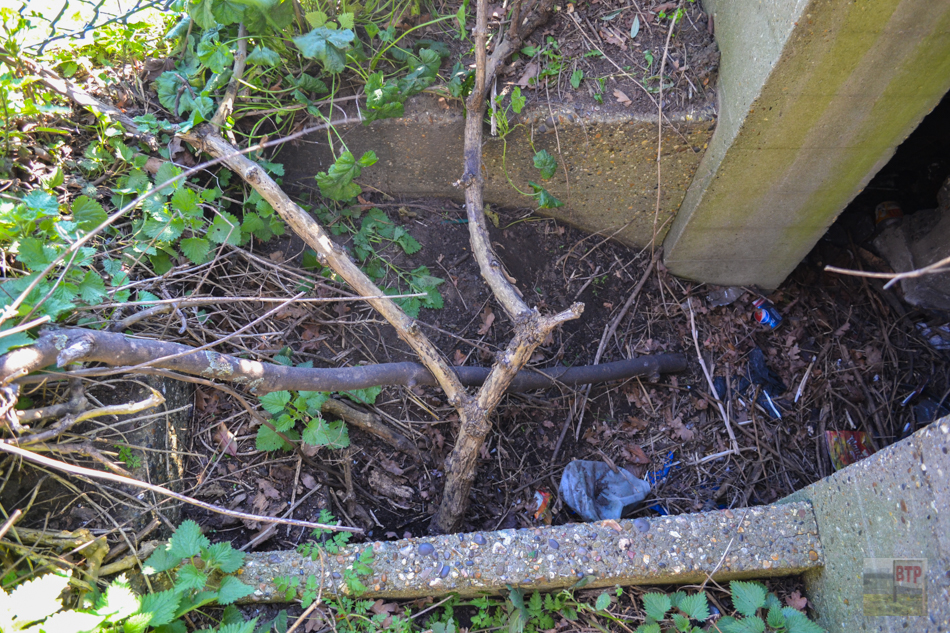
The first pillbox we saw was bare concrete and of Type 24 design (guide to pillbox variants here). It was hidden behind the McDonalds car park, facing out onto Rochford Road. It was accessible but featured a fair degree of graffiti inside.
East Pillbox – Type 22
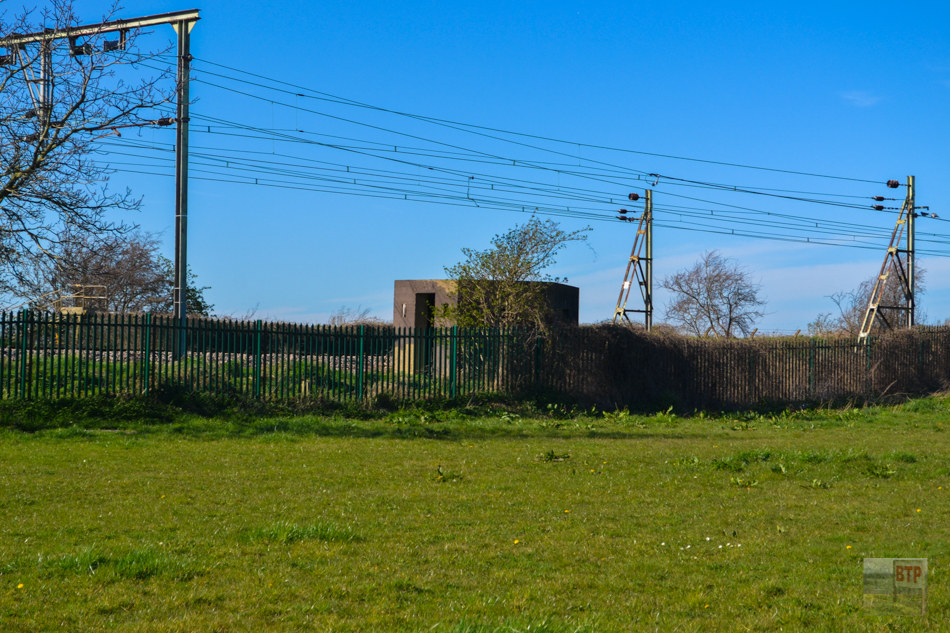
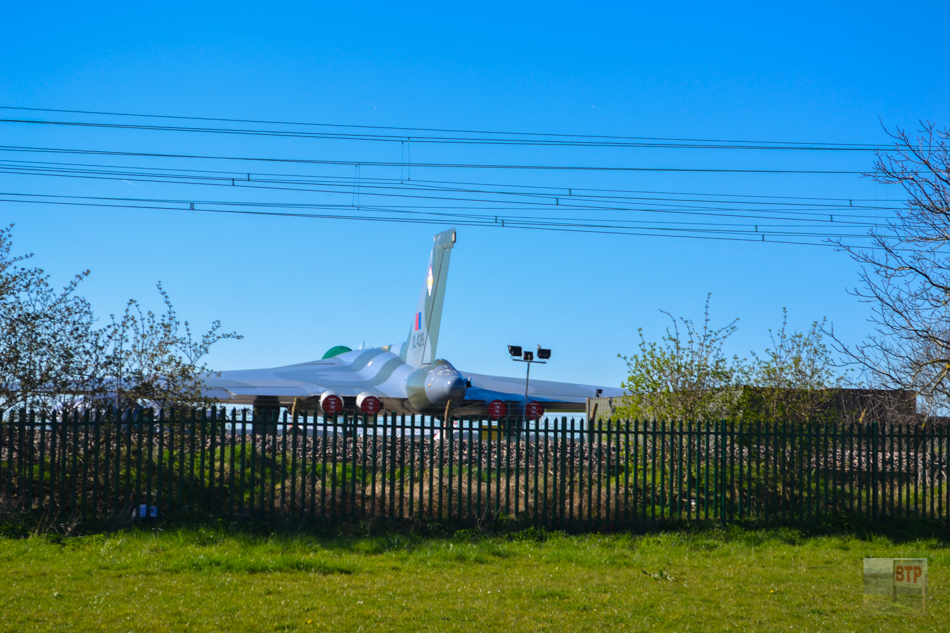
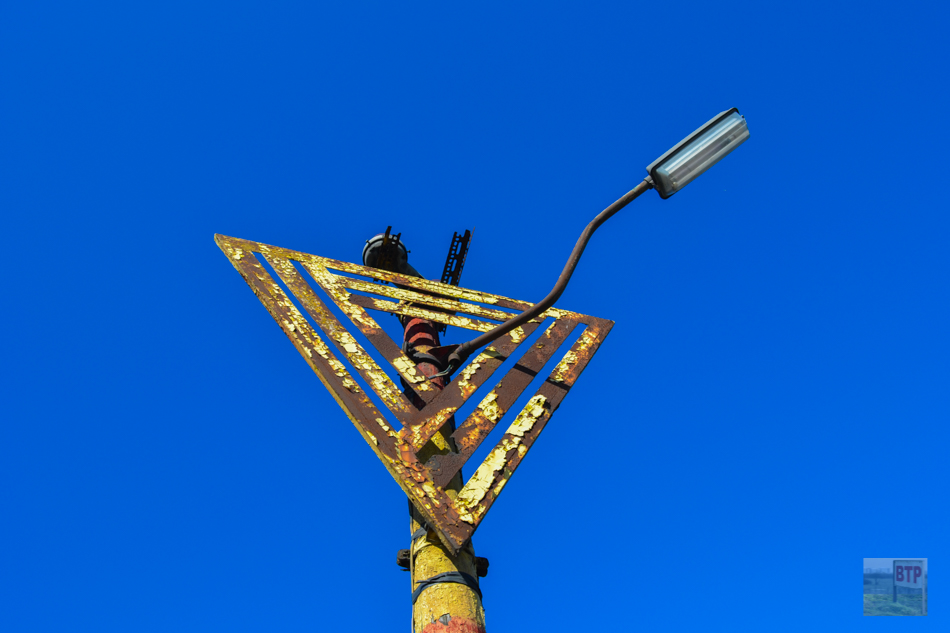
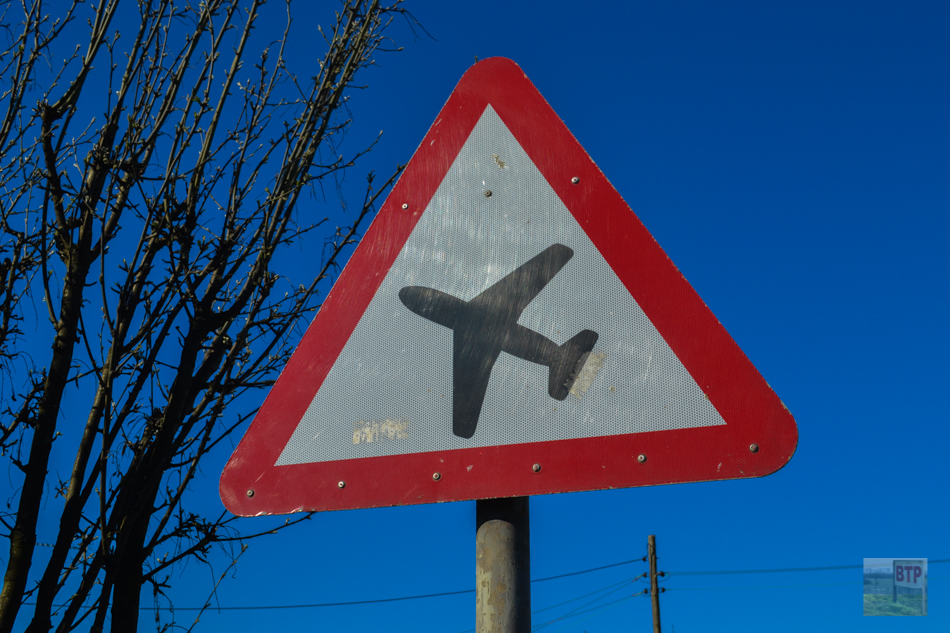
After this we crossed the railway line via the bridge that the road continued onto, with some old signage to be seen. We passed the current airfield control tower, the Avro Vulcan bomber (an impressive model of plane used by the RAF from 1956 up to 1984) that the airport holds there, and another Type 24 pillbox similar to the one we saw first. Still heading along the Rochford Road-side, we made an impressive discovery. Jack spotted what appeared to be an Anderson shelter from the Second World War. It looked old enough, and has been confirmed to likely have been one, although possibly lifted (originally sunk into the ground for extra strength against bombing). You can read more about that here.
North-East Pillbox – Cantilever
After a few directions from the locals, and a walk through a public park, we ended up at another type of pillbox – this time, of ‘Cantilever’ design, which we would see two more of later on. Cantilever ‘mushroom’ pillboxes were designed and built by F C Construction for airfield defence, and ’53 examples are still extant’. The roof was disconnected from the sides of the pillbox, supported only by a large central pillar, meaning a 360 degree firing slit was possible. They featured a rail around the sides of the slit for the mounting of weapons. The slit was only slightly higher than ground level, as the main pillbox body was sunken, enabling what appeared to be an effective defence. This one was against the railway fence, although a way from the actual track. Its door and firing slit was bricked up. There was a total of four of these pillboxes around RAF Rochford as of 2014, and we have covered two here, with another two existing south of the mystery bunker covered later.
North Pillbox, Type 22
We next passed a hut which looked as if it was likely to have been from the days of the Rochford airfield, underground some kind of conversion or restoration work which seemed to be fairly vacant. The three of us then joined up with Rochford Hundred Golf Course, finding a pillbox on the outskirts with a fresh puddle inside. We looked out at the golfers, all over 50, wondering which bad-boy could’ve been responsible. It was rendered in brick from the casting process, although much of this had crumbled away to reveal the concrete underneath.
Mystery Bunker, North-West Cantilever & NW Type 22 Pillbox
Next we passed a few derelict planes within the airport site, and a small stream. This lead us out onto a field where we would see the last four pillboxes together. One of the bunkers is mysterious, and has been proposed as being either a possible ammo store (‘magazine’), shelter, or a command bunker as someone commented on our documentary, although it wouldn’t have been used for firing upon enemies. It has been suggested that it may have been for a light anti-aircraft gun battery or pit. It was basically a covered brick pit sunken far into the ground, with steps going down into it. Although beyond the airport fence, these fields would originally have been part of the site of the airfield. Finally, we checked out two more cantilever pillboxes in that field, along with another Type 24. One of the cantilevers had an aircraft tyre in, which looked rather old too!
We revisited this pillbox in early 2021, with the once-idyllic countryside swallowed up by ongoing development. However, the pillboxes of RAF Rochford have fortunately been kept and fenced off – for now, along with the above ‘command post’ bunker. We visited this one by chance, so the photographs were only taken on a phone. We found a rather nice barbed wire screw picket next to it, probably original. Here are pictures showing it 7 years on:
South-West Type 22
Based to the south-west of the runway, this pillbox is accessible via a public footpath and was explored separately in May 2013.

